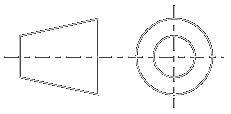Categories
Statistics
Since 08.08.2014
Counts only, if "DNT = disabled".
Your IP is 3.142.198.129
ec2-3-142-198-129.us-east-2.
Counts only, if "DNT = disabled".
Your IP is 3.142.198.129
ec2-3-142-198-129.us-east-2.
Info
เราจะทำแบบวิศวกรผู้ยิ่งใหญ่

27. April 2024
Your valuable opinion :
Coaxial_Stub_Filter_Designer.php 17689 Bytes 26-07-2018 12:12:47
Coaxial Stub Notch Filter Designer
This calculator is suiteable to calculate the length of a piece of coaxial cable to produce a notch at a desired frequency.
Unlike to others, this notch is then matched to the source/load at the passband frequency. Matching may be achieved with
an L-C-Lowpass or two coaxial cable stubs and an inductor. Or only coaxial cables. Few material & work, much gain in performance !!!
Motivation and Verification
This method of notching out unwanted frequencies is not new. It is a trick, well known among radio - television - technicians.
Unfortunately this notch is usually very broad. We therefore run some simulations to see, how to improve this situation.
Adding a second stub of the same length, together with an inductor, improves the situation dramatically. We therefore hacked together this
calculator to share our experience. The two pictures below show the situation when "just" using a coaxial cable stub as a notch.
Insertion Loss was 1.02 dB at 100 MHz and 32.8 dB at 200 MHz. With this additional matching components, Insertion loss lowers to approx. 0.4 dB while
the notch is approx. 40 dB.
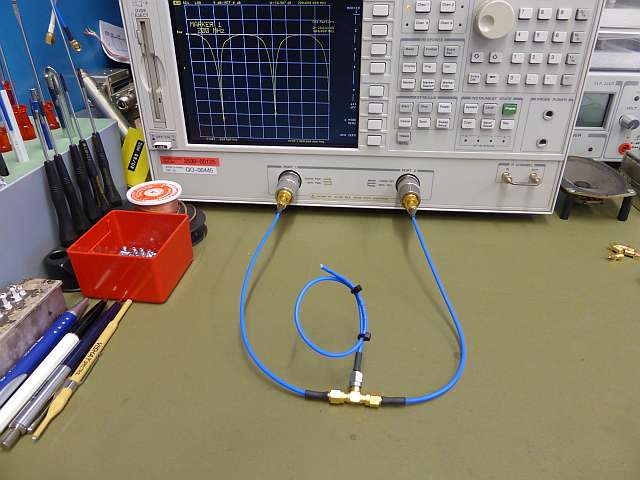
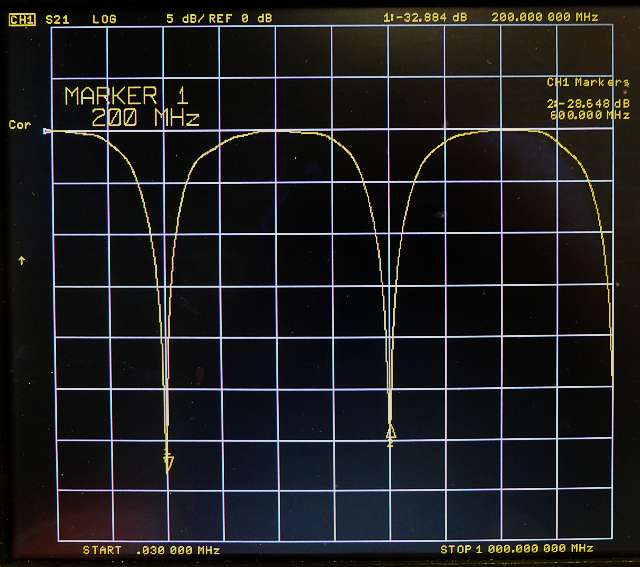
Example (not from practice, as we don't run a FM broadcast station - at least not often :-) Assume we transmit at 100 MHz. We would therefore
want to attenuate the harmonic frequency at 200 MHz. Depending on the coaxial cable which is used, the stub is approximately 0.25 m long.
(λ/4 * vf at 200 MHz, Stub open) Connecting this to a network analyser (Multiflex 86 for the test), we see, that the notching action repeats at 600 MHz, 1000 MHz and so on.
We also see, that the notch is broad.


Example (not from practice, as we don't run a FM broadcast station - at least not often :-) Assume we transmit at 100 MHz. We would therefore want to attenuate the harmonic frequency at 200 MHz. Depending on the coaxial cable which is used, the stub is approximately 0.25 m long. (λ/4 * vf at 200 MHz, Stub open) Connecting this to a network analyser (Multiflex 86 for the test), we see, that the notching action repeats at 600 MHz, 1000 MHz and so on. We also see, that the notch is broad.
PROPOSED NETWORK I
The calculated value for the inductor was 79.6 nH, we used a Coilcraft 1206 CS (82 nH). For the capacitor, a Mica 10 pF and a trimmer (17pF) were
used. The insertion loss could be trimmed to 0.39 dB at 100 MHz, while the notch depth was > 40 dB. As this combination is in fact
a Lowpass, C - L - open Coax, this attenuates higher frequencies as well.


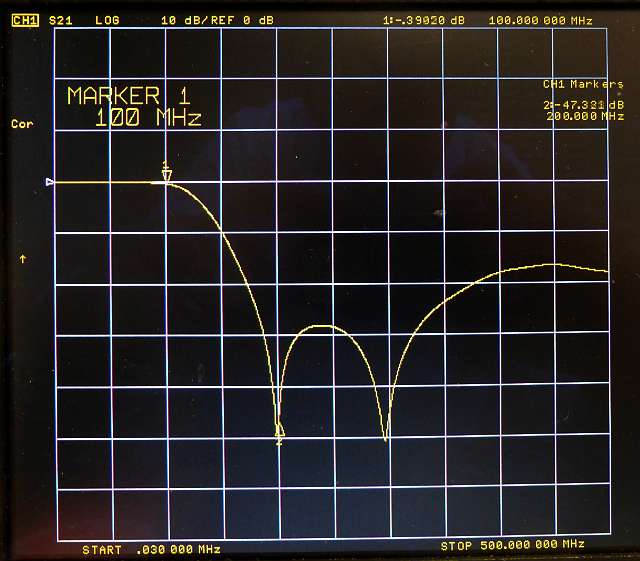
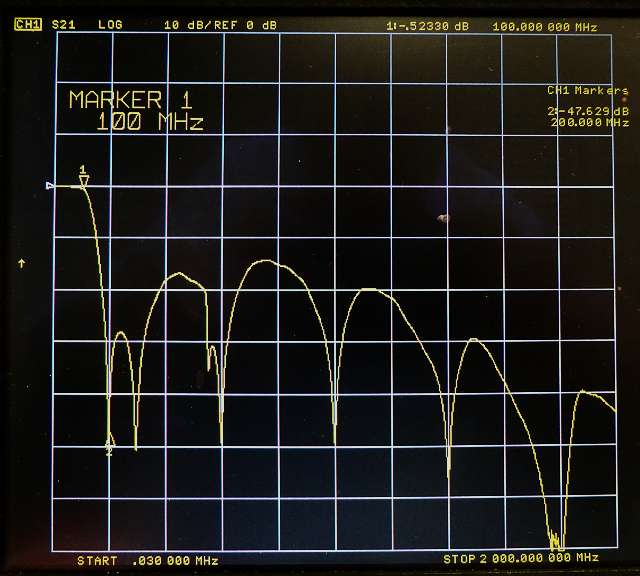




PROPOSED NETWORK II
The calculated value for the inductor was still 79.6 nH, we (still) used a Coilcraft 1206 CS (82 nH). For the capacitor, we used a piece of coaxial cable. As it turned out,
that for matching to 50 Ω a capacitor of the same value as the notch is necessary (both are 31.8 pF). (In the calculation, the length is modified to 98% and 102% in order to get
a broader notch. The insertion loss could be optimised to 0.35 dB at 100 MHz with the use of SMA connectors (quick hack), while the notch depth was > 40 dB.
As this combination is in fact a Lowpass, open Coax - L - open Coax, this attenuates higher frequencies as well.
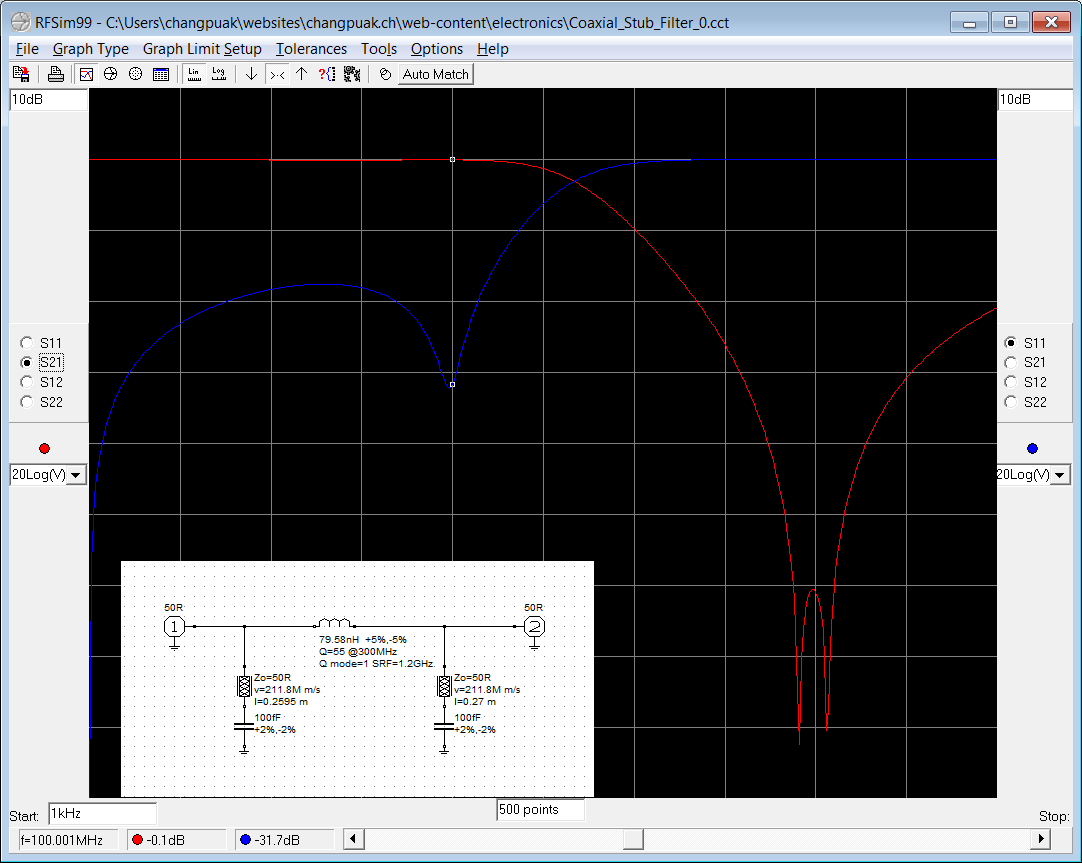
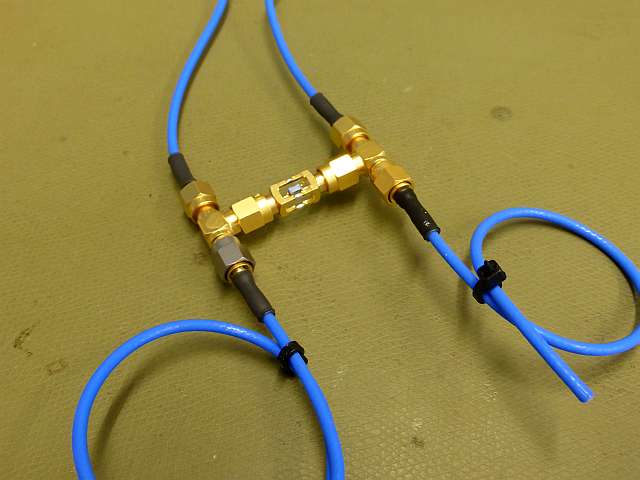

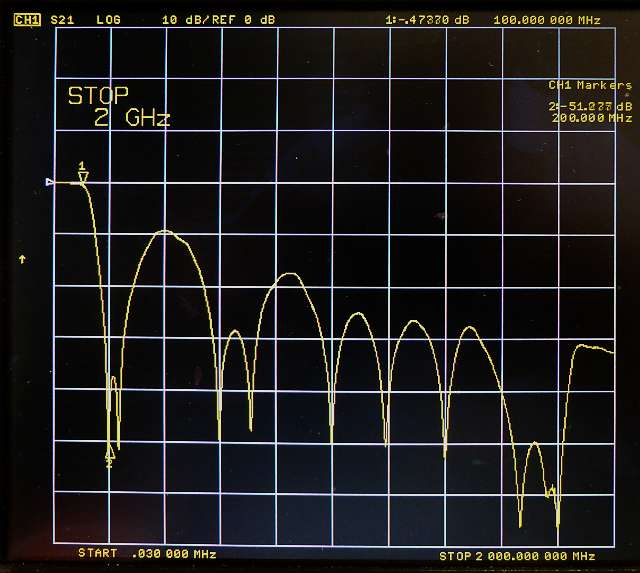




PROPOSED NETWORK III
In this third composition, we even replaced the inductor with a piece of coaxial cable. In all simulations (with different cables), we saw, that the length
of the series coaxial cable must be longer than the notch by a factor of sqrt(2). Obviously this has nothing to do with the fact, that the notch frequency
is twice the frequency of the passband :-(
The attenuation at higher frequencies is poor, compared to the other networks, as only the coaxial cable is the amplitude / frequency determining factor.
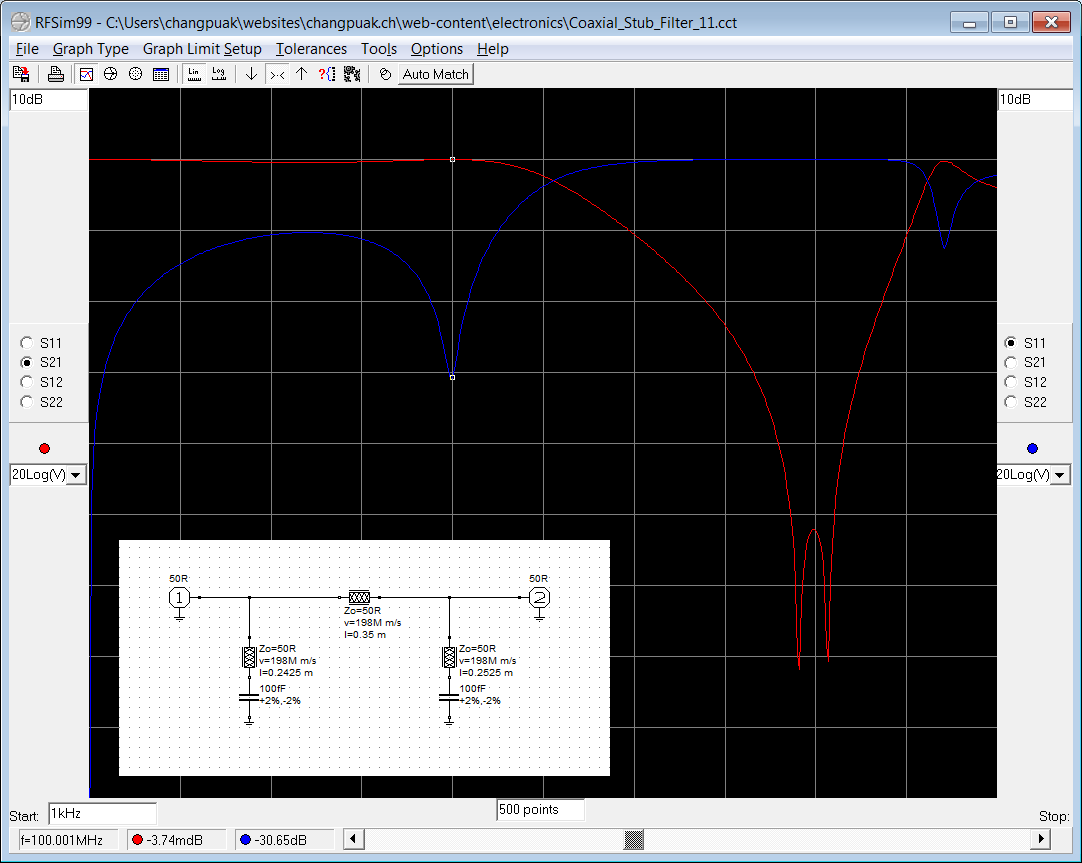

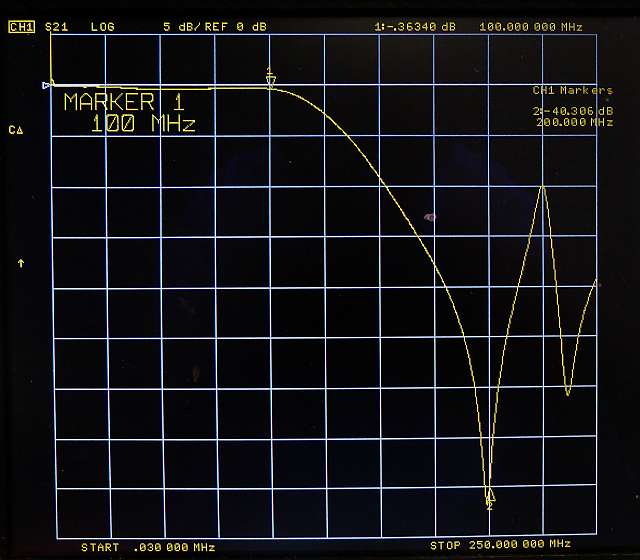
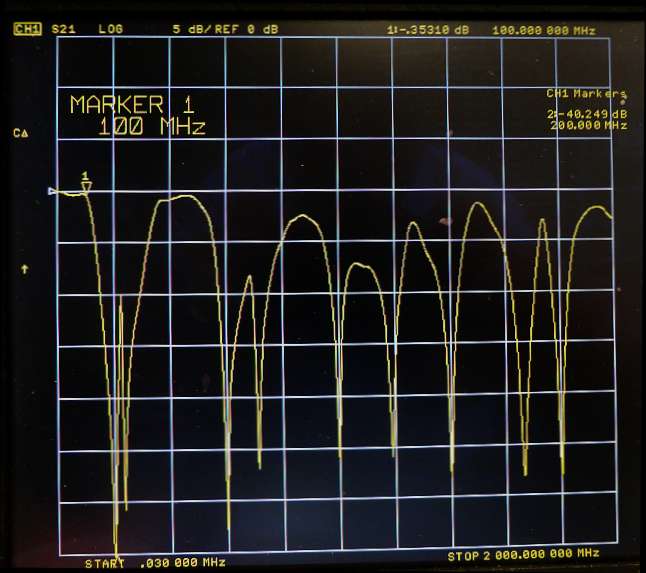
The attenuation at higher frequencies is poor, compared to the other networks, as only the coaxial cable is the amplitude / frequency determining factor.




✈ Share your thoughts
The webmaster does not read these comments regularely. Urgent questions should be send via email.
Ads or links to completely uncorrelated things will be removed.
Your Browser says that you allow tracking. Mayst we suggest that you check that DNT thing ?
 ช้างเผือก
ช้างเผือก
